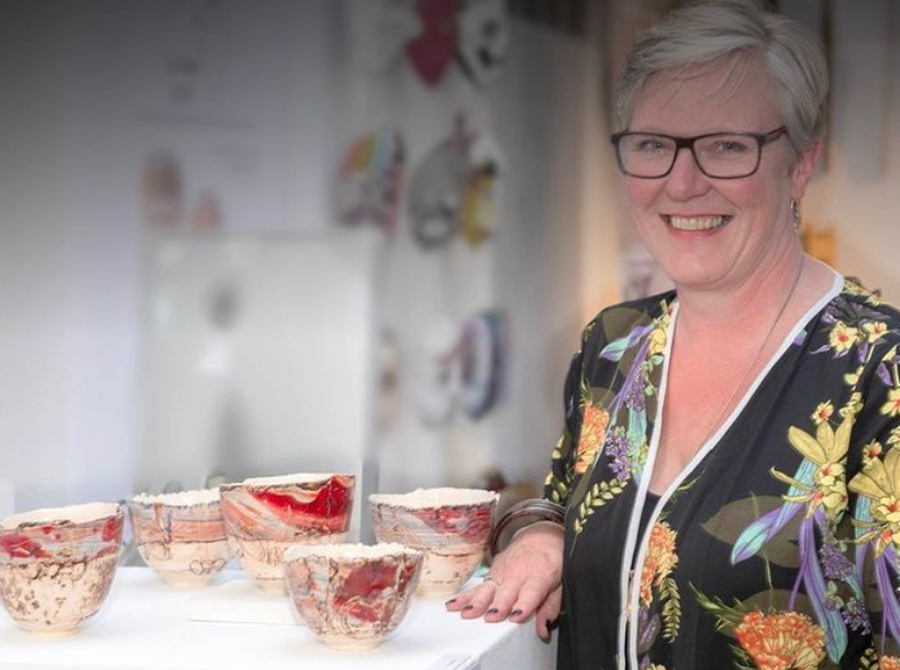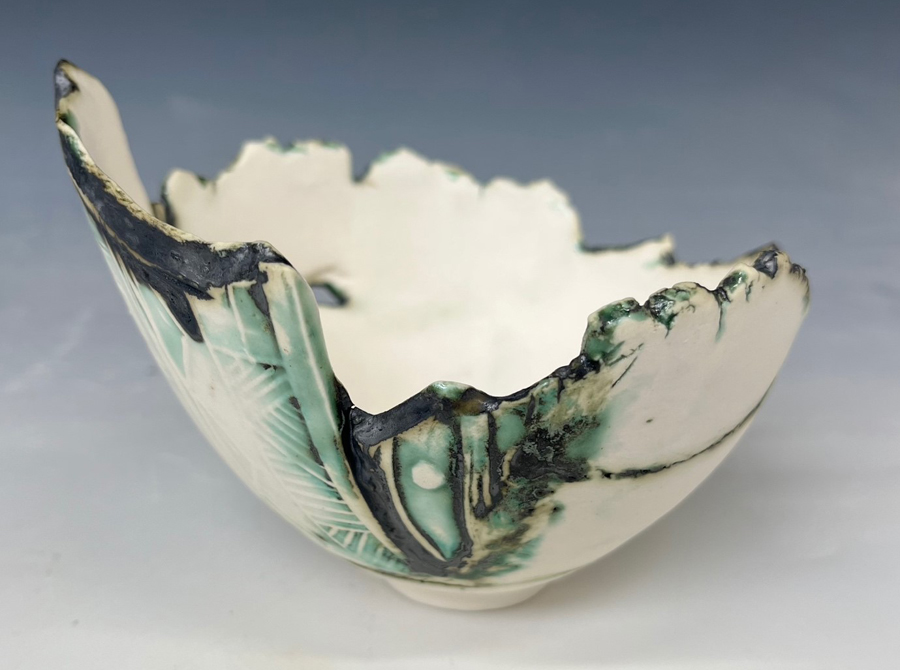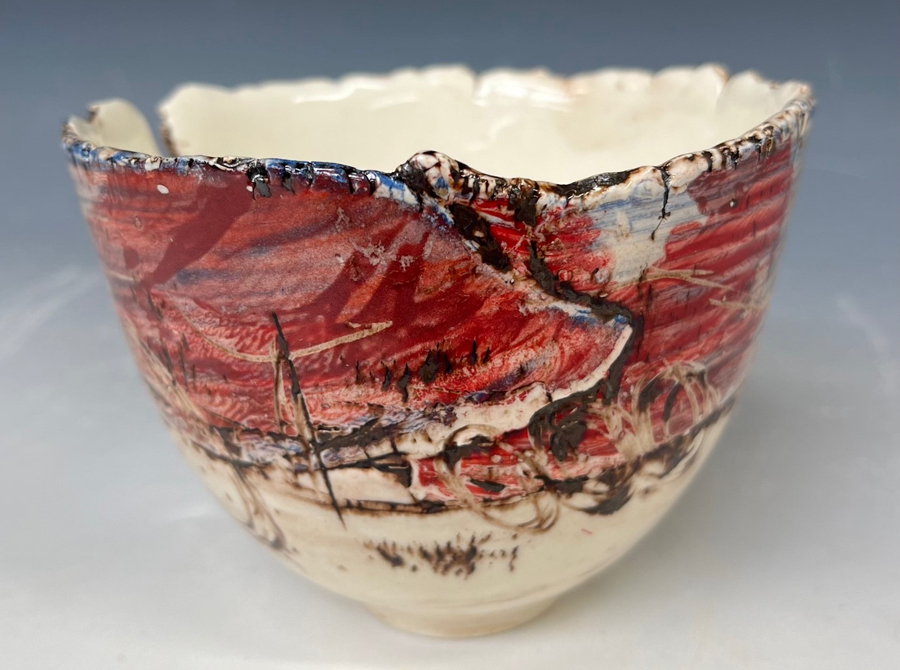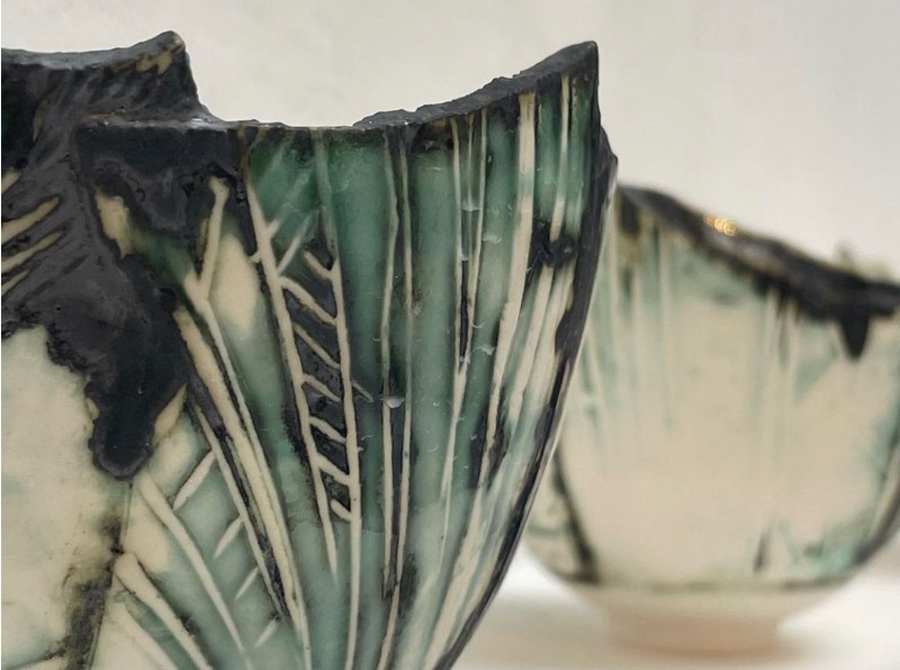2022 AWARD WINNER | University of Central Lancashire
Posted on - 23rd September 2022




PATRICIA HELEN JONES
University of Central Lancashire (UCLan) | MA Ceramics
Tell us about yourself, your work, and your career path so far.
I am 54 years old and have spent the last 24 years teaching art and music in secondary schools/sixth forms. I currently work part-time as an Art Lecturer at Burnley College in Lancashire. As well as being an artist, I am a singer and come from a very musical family. Growing up with music all around me has recently had a massive influence on my work as a ceramicist after my focus on my theme of ‘Clay Songs’ during my Masters. My research helping me to recognise that my creativity in both art and music are inseparable.
Describe your first encounter with clay?
I first encountered clay in 1984, at sixth form college. In my first year I took an extra couple of O Levels and one of them was Crafts. My teacher encouraged me to work with clay and I spent the next two years doing an O level then A level focused entirely on ceramics. My fascination with clay continued through my Art Foundation course and after this I gained a place on the Ceramics BA course at Central St Martin’s in London. Sadly, I was extremely homesick and I left the course after 8 months and returned to Lancashire, taking a job as a Civil Servant before realising the error of my ways and returning to do a general art degree in 1994 at St Martin’s University College, Lancaster. In my final year I returned to specialising in Ceramics, gaining a 2:1 before doing my PGCE.
Why did you choose ceramics?
I don’t think I ever ‘chose’ to do ceramics, it was just something that was interesting and different. I always enjoyed making things having inherited skills as a seamstress from my mother whilst working with her in the little haberdashery shop she owned. A friend had done some ceramics and told me how much they enjoyed it, I think I was curious and I like a challenge. During the majority of my career as an art teacher I haven’t had the opportunity to work in clay with students, as most schools’ art provision has been reduced and many sadly sold off their kilns and got rid of the precious specialist equipment needed. I returned to it as a hobby about 4 years ago, buying a small kiln on impulse and then realising how much I had missed it. Working part-time gave me the time to undertake the MA Ceramics course at Uclan and after some encouragement from my family, I took the plunge and applied to start the course in 2020.
Where do you find inspiration? Places, people, objects, music…
Because of the strong influences of music in my life, my work is based on responses to songs and music that are markers in my life and which evoke nostalgia. I am fascinated by people who have synaesthesia and chromesthesia, whereby sounds and music trigger a person to see colour. I myself do not have synaesthesia but I create a starting point for my work by painting responses to music which is special to me. I begin by creating a graphic score of the music and this becomes the catalyst for a range of ceramic pieces. My very first range of work is based on Edward Elgar’s Nimrod, from his Enigma variations. I love the continuous line in this music that builds from almost nothing to a huge crescendo and then returns to peace and quiet once more. I tried to express the timbre and texture of the music through the marks I made and I saw predominantly green tones when I heard it. The two other ranges of vessels which were included in my MA exhibition were based on Joni Mitchell’s ‘A Case of You’, a favourite since teenage years, and Mozart’s Laudate Dominum, a piece which I have sung on many occasions and sadly the music which my mother passed away to in 2021.
What are the tools of your trade that you can't do without?
When I am making I use quite a limited selection of tools, a potter’s knife, a needle, a rubber kidney and some different sized curved metal serrated scraper tools.
What is a typical day in the studio like?
A typical day in the studio takes planning so that the clay has dried out sufficiently to hold the shape of the vessels, but soft enough for the slabs to be joined securely and decorative surface treatments are added at an early stage to allow them to dry and avoid smudging or squashing. I would aim to make two or three vessels in one day, normally working until all the clay that has been prepared and decorated is used up, thus avoiding waste and reclaiming. If I am working on two sizes or ranges of vessels they are usually made in different types of clay which dry at different rates so this gives me a natural order for making and less need to dampen or cover waiting slabs. Once I begin to construct the shapes, I work quickly, all the time responding to the music in a free and improvised way.
What do the next 12 months have in store for you?
Over the next 12 months I hope to exhibit my work at galleries in and around the north west of England and have applied for opportunities already, along with competitions for emerging artists. I am aiming to apply for Ceramic Wales 2023 as a maker, having already been part of a student stand for Uclan who showed our work there in summer 2022. Whilst I am still working as a part-time Art Lecturer, time is limited but I am confident that I will find the time spend time each week working in my own small studio creating my clay songs.
What advice do you have for those currently studying ceramics in further education?
Over the last two years whilst studying for my Masters I had many set-backs, disappointments and changes of direction in my approach to my practical work. During that time I found it invaluable to talk to my peers on the MA course, tutors and technicians to share experiences, ask for advice and generally take advantage of the experience and opinions of other makers. It really helped me work through the problems I was having and gave me the encouragement to push through frustrations and also celebrate the ‘wins’. I think, in essence my advice to other makers would be to not give up when things don’t go the way you want them to. Additionally, keeping a thorough technical diary which records results of tests for all the processes of making, glazing and firing, helps enormously. There is nothing worse that opening the kiln to something amazing, then not begin able to remember how you achieved it.

